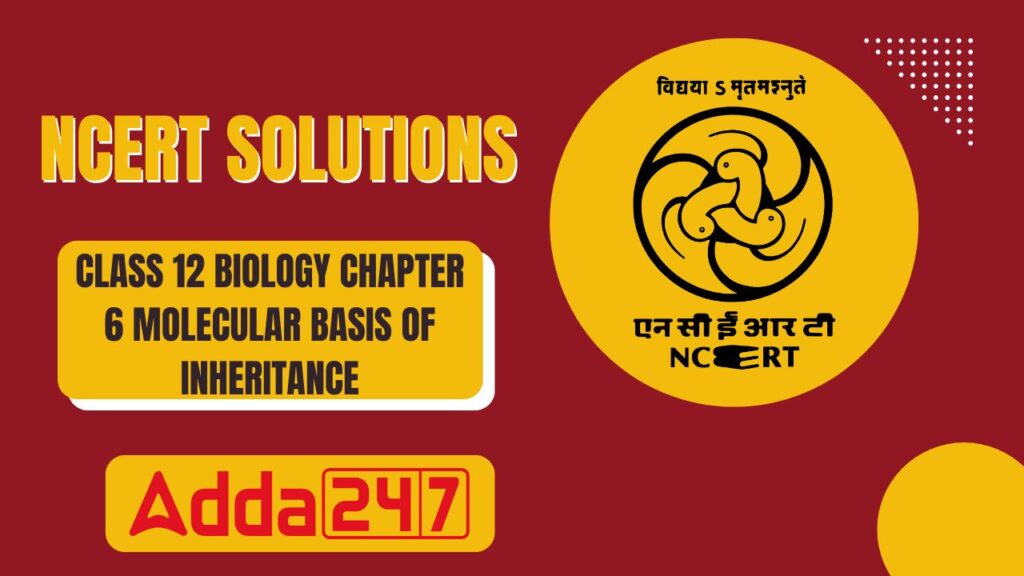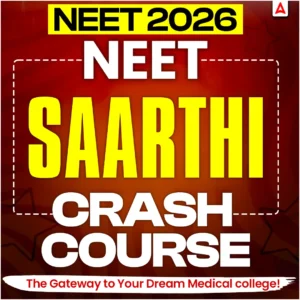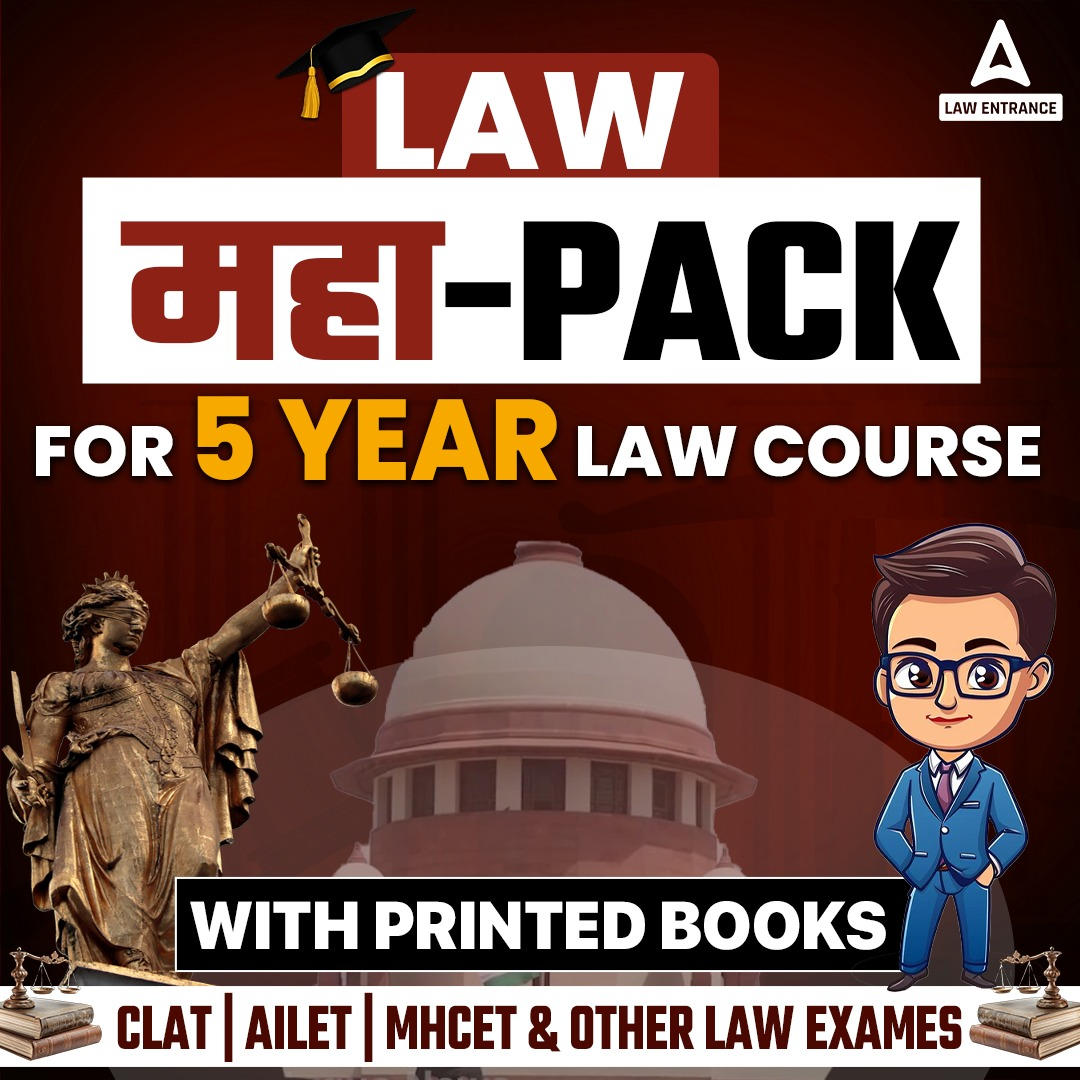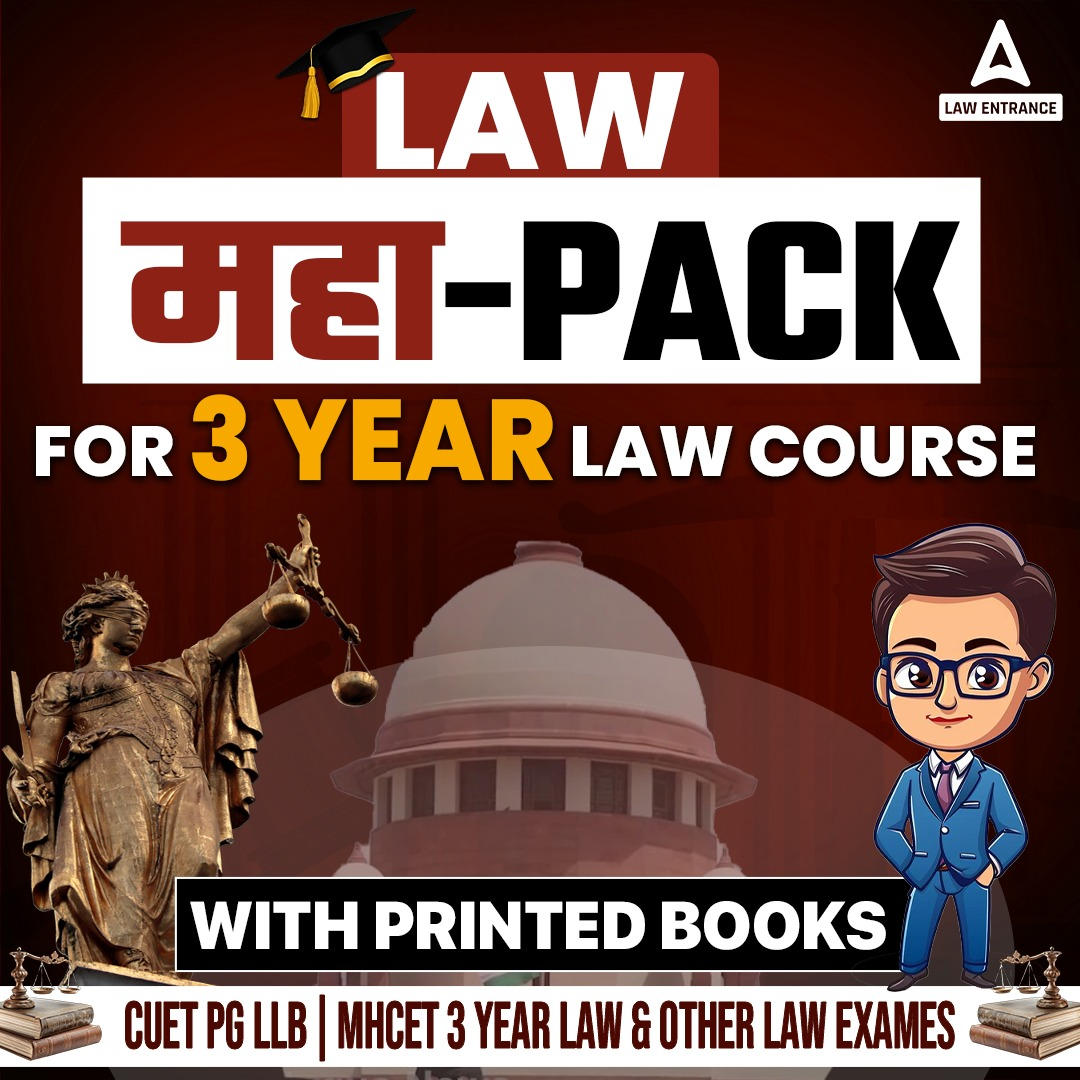
The Molecular Basis of Inheritance is the study of how genetic information, carried by DNA and RNA, is transmitted from one generation to the next. The CBSE Class 12 Biology Chapter 6 revolves around DNA as the Genetic Material, DNA Replication, Transcription and Translation, Genetic Code, RNA’s Roles, etc.
As a step towards providing world-class study materials to students, the faculty team at Adda247 has crafted the NCERT Solutions for Class 12 Biology Chapter 6 Molecular Basis of Inheritance. Scroll down in the article below to check the solutions for all the questions.
Overview of CBSE Class 12 Biology Chapter 6
Below we have added the overview of CBSE Class 12 Biology Chapter 6 so that all the aspirants can start their preparations accordingly:
- What is DNA?
- DNA (Deoxyribonucleic Acid) is like a blueprint that carries all the instructions for building life. It’s found in the nucleus of our cells and determines traits like eye color, height, etc.
- It has a double-helix structure (like a twisted ladder), discovered by Watson and Crick.
- DNA is made of smaller units called nucleotides, which have:
- A sugar molecule (deoxyribose)
- A phosphate group
- A nitrogenous base (Adenine, Thymine, Cytosine, or Guanine)
- What is RNA?
- RNA (Ribonucleic Acid) is a single-stranded molecule that helps DNA carry out its instructions.
- It’s like a messenger that carries the genetic code from DNA to make proteins.
- Types of RNA:
- mRNA (messenger RNA): Carries genetic code from DNA to ribosomes.
- tRNA (transfer RNA): Brings amino acids to ribosomes for protein-making.
- rRNA (ribosomal RNA): Part of ribosomes, where proteins are made.
- DNA Replication:
- This is the process where DNA makes a copy of itself before a cell divides.
- It happens in a semi-conservative way, meaning each new DNA molecule has one old strand and one new strand.
- Enzymes like DNA polymerase, helicase, and ligase help in this process.
- Transcription:
- This is when DNA’s code is copied into mRNA.
- It happens in the nucleus, where a part of DNA (a gene) is used as a template to make mRNA.
- mRNA then leaves the nucleus to go to ribosomes for protein synthesis.
- Translation:
- This is the process where mRNA’s code is read by ribosomes to make proteins.
- tRNA brings the right amino acids, and ribosomes link them to form proteins, which do most of the work in our body.
- Genetic Code:
- The genetic code is like a dictionary that tells which amino acids are made from specific DNA/RNA sequences.
- A set of three nucleotides (called a codon) codes for one amino acid. For example, AUG codes for the amino acid methionine.
- Human Genome Project (HGP):
- This was a huge global project to map all the genes in human DNA.
- It took 13 years (completed in 2003) and helped us understand human biology, diseases, and genetics better.
- DNA Fingerprinting:
- This is a technique to identify people based on their unique DNA patterns.
- It’s used in forensic science (to catch criminals), paternity tests, and studying genetic diversity.
- Gene Regulation:
- Not all genes are active all the time. Gene regulation controls when and how genes work.
- For example, the lac operon in bacteria controls lactose digestion. It turns on only when lactose is present.
- Polymorphism:
- These are small variations in DNA sequences among individuals. They are the basis for DNA fingerprinting and genetic mapping.
NCERT Solutions for Class 12 Biology Chapter 6 Molecular Basis of Inheritance
During the preparation phase for the final examinations, students will get stuck on numerous questions. Therefore, to make their preparation phase easier, we have provided the NCERT Solutions for Class 12 Biology Chapter 6 Molecular Basis of Inheritance in the article below:
Q1. Group the following as nitrogenous bases and nucleosides: Adenine, Cytidine, Thymine, Guanosine, Uracil, Cytosine.
Answer:
- Nitrogenous Bases: Adenine, Thymine, Uracil, Cytosine (these are the single molecules that form part of DNA or RNA).
- Nucleosides: Cytidine, Guanosine (these are nitrogenous bases attached to a sugar molecule).
Q2. If a double-stranded DNA has 20% cytosine, calculate the percentage of adenine in the DNA.
Answer:
- According to Chargaff’s rule, in DNA, Adenine (A) pairs with Thymine (T), and Cytosine (C) pairs with Guanine (G).
- If Cytosine = 20%, then Guanine = 20% (because C = G).
- Total C + G = 20% + 20% = 40%.
- The remaining percentage is A + T = 100% – 40% = 60%.
- Since A = T, Adenine = Thymine = 60% ÷ 2 = 30%.
- So, the percentage of Adenine is 30%.
Q3. If the sequence of one strand of DNA is 5’-ATGCATGCATGCATGCATGCATGCATGC-3’, write the sequence of the complementary strand in the 5’→3’ direction.
Answer:
- DNA strands are complementary, meaning A pairs with T, and C pairs with G.
- The given strand is: 5’-ATGCATGCATGCATGCATGCATGCATGC-3’.
The complementary strand (in 5’→3’ direction) is: 5’-GCATGCATGCATGCATGCATGCATGCAT-3’.
Q4. Why is the Human Genome Project called a mega project?
Answer:
- The Human Genome Project (HGP) was called a mega project because:
- It aimed to sequence all 3 billion base pairs in human DNA, a massive task.
- It took 13 years (1990–2003) and involved scientists from many countries.
- It required advanced technology and huge funding (about $9 billion).
- It opened new areas in biotechnology, genetics, and medicine, helping us understand human biology better.
Q5. What is DNA fingerprinting? Mention its applications?
Answer:
- DNA fingerprinting is a technique to identify individuals based on unique patterns in their DNA.
- Applications:
- Forensic science: To identify criminals from DNA samples (e.g., blood, hair) at crime scenes.
- Paternity testing: To confirm biological parents of a child.
Biodiversity studies: To identify and protect different species or varieties of crops and livestock.
Q6. What is an operon? Explain the lac operon?
Answer:
- An operon is a group of genes controlled by a single promoter that work together to perform a function, commonly found in bacteria.
- Lac operon (in E. coli):
- It controls the digestion of lactose (a sugar).
- It has three parts: promoter (where RNA polymerase binds), operator (where a repressor protein binds), and genes (lacZ, lacY, lacA) that make enzymes to break down lactose.
- When lactose is absent, the repressor binds to the operator, stopping gene expression.
When lactose is present, it acts as an inducer, binding to the repressor and allowing the genes to be expressed, producing enzymes to digest lactose.
Q7. Briefly describe: (a) Transcription, (b) Translation, (c) Polymorphism, (d) Bioinformatics.
Answer:
- (a) Transcription: The process where DNA’s genetic code is copied into mRNA in the nucleus. It uses DNA as a template and is done by the enzyme RNA polymerase.
- (b) Translation: The process where mRNA’s code is read by ribosomes in the cytoplasm to make proteins. tRNA brings amino acids, and ribosomes link them to form a protein chain.
- (c) Polymorphism: Variations in DNA sequences among individuals due to mutations. These differences are used in DNA fingerprinting and genetic mapping.
(d) Bioinformatics: A field that uses computers to store, analyze, and interpret biological data like DNA and protein sequences. It helps in understanding genes and developing new technologies.
Q8. How did Hershey and Chase prove that DNA is the genetic material?
Answer:
- Hershey and Chase used a bacteriophage (a virus that infects bacteria) called T2 in their 1952 experiment.
- They grew two sets of viruses:
- One with radioactive phosphorus (P-32), which labels DNA (since DNA contains phosphorus).
- One with radioactive sulfur (S-35), which labels proteins (since proteins contain sulfur).
- They let the viruses infect bacteria:
- The bacteria infected with P-32-labeled viruses had radioactive DNA inside, showing DNA entered the bacteria.
- The bacteria infected with S-35-labeled viruses had no radioactivity inside, showing proteins stayed outside.
Conclusion: DNA, not protein, is the genetic material that carries hereditary information.














